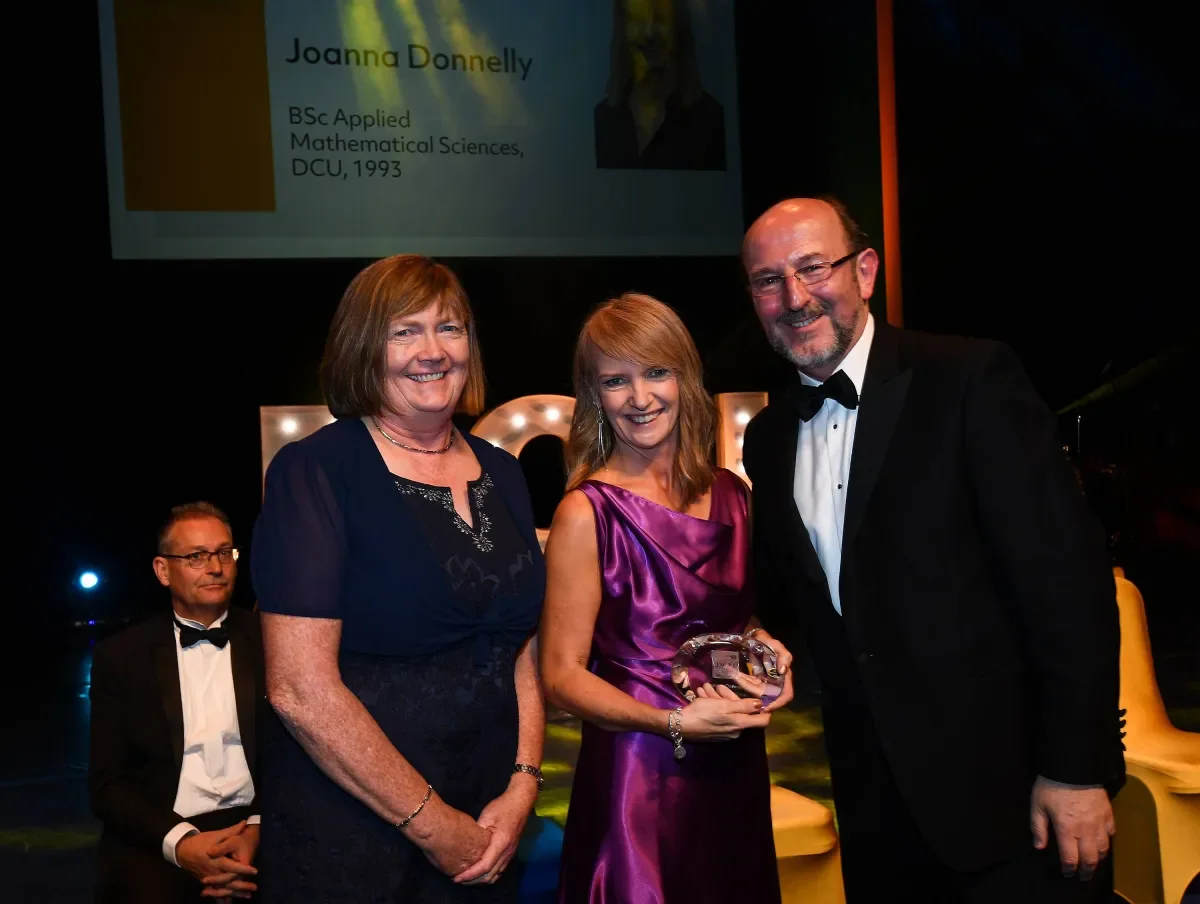

#MathsWeek: Maths to Met Eireann- Meteorlogist Joanna Donnelly tells us how Maths influences her career path.
Well known meteorologist Joanna Donnelly is a DCU Alumni Wall Awardee for 2019.
Joanna studied Applied Maths in DCU in the 1990s – so we asked her a few questions to find out where her love for Maths has brought her
On a day-to-day basis, I do arithmetic rather than actual maths. I still remember my older colleagues in Met Éireann doing numerical weather prediction models by hand. However, all the equations are worked out by computer now.
So on a day-to-day basis, I do simple arithmetic, using your head to convert the numbers on our output computer models into words for our forecast models. So for example, a 15 knot wind might be a ‘moderate breeze’.
Well in my book (‘The Great Irish Weather’), I use the line - and it’s the simple way to put it - ‘Maths is the language that science speaks’.
The fundamentals of science all breaks down to mathematics.
Science will answer every question you have – and without maths you never find an answer.
Yes – simple answer.
I’ve always loved maths, arithmetic and pattern matching.People might not know they love or loved maths, but they might know they love doing puzzles or working out games like Candy Crush, or Tetris as it was in my day.
I knit – and I like to make the patterns, and I can work out with mathematics what a pattern will look like when I start knitting.
I was talking to someone recently – and they were telling me they were no good at maths, that they’re ‘not a maths person’.
When we learn to read, or when we’re teaching our children to read, we sing the alphabet and read to them, and read aloud. We know the importance of reading to our young children. But we don’t do the same thing with maths.
I do with my children. We do sums in the car. To be literate in maths is very easy if we start and approach it in the same way we approach reading. So, like reading, do a lot of it, a lot of the simple stuff at the start.
I’m reminded about what Andre Agassi once said that if you want to be a successful tennis player, you have to hit 10,000 balls
It’s the same with maths – when people say they like to read, they read a lot. It should be the same with maths – it’s just like reading. It takes a lot of practice.
My mam was the same with us as I am with my children – we counted everything. We would count in threes, sixes, other sequences and practise.
I play a game in the car with my boys, we start with a number, they double it, they double each number and see how far we can go until we get to 64,000 and something. We challenge each other to see how high we can get. It’s a lot of fun!
Games, games and games. Treat it the way we treat reading.
Modern parenting is so clued into how important reading is, reading aloud, reading to our children. With Maths, we don’t get the same message.
Subjects like engineering, computer technology and, obviously, mathematics itself. My husband is always shocked when he meets people I went to university with, and the diverse subjects we moved into.
There is so much we can do with maths. One of my classmates went into Internet Security, another one went into the casino industry. You couldn’t get two more diverse careers from one class. It’s because Maths is the basis of all science and you can go into so many different areas.
If you ‘re not sure what you want to do with your life, and it’s fine to feel like that if you’re coming into Leaving Cert year and making these life choices, take a broad degree like Maths. I know I’ll be encouraging my children to take a ‘broad’ degree first, and then they can use it when they know what area they want to have a career in later on.
My course is so long ago! But it gave me the fundamentals of understanding how mathematics works and how it can be used. The foundation I think is what I got from it.
In my thesis in final year in DCU, I was given options, and I got statistical analysis of weather related subject. I had my eye on weather then but there were no positions in Met Éireann.
So after I finished in DCU, I worked as an administrator in Griffith College and I used the subjects I had done in my final year to set up a database for the computer course I worked on in the college. Then I lectured in Mathematics, and helped create a degree programme in the subject. I was there for two years, and after that I felt I was ready to move into Met Éireann.
It’s completely unrecognisable – I was there 30 years ago. Ten years after I was there, it was already completely unrecognisable. I enrolled in 1987 when it was NIHE, and there was just the Albert College and Henry Grattan buildings, along with the restaurant.There were five girls and six boys in my class when we graduated.
While I was there, the ‘Street’ was built and the library was where Registry is now.The Interfaith Centre was also built while I was there. During my time there, NIHE became DCU. Thanks to its university status, student numbers exploded. We were very excited to be on the ground floor of DCU. There was no student bar at the time so we went to The Slipper.
Being mathematicians, we loved to played cards in the ‘Fishbowl’ – a lot of alumni will remember this as the smoking section attached to the main cafeteria. That’s gone a long time now!
